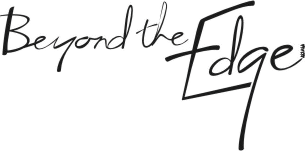You wouldn’t paint by numbers, so why would you want to facilitate by numbers?
 There were 10 separate rooms at the Gauguin exhibition at the Tate Modern in London. Each room represented a different theme. It was very crowded, after all this was the TATE MODERN in LONDON. Did I mention already that it was in London, and I was there? Really crowded. People shuffled around others to get closer to the pictures, stepped over pushers and avoided toes. Lots of people had rented iPods and were listening intently to whatever interpretation was being provided. A group appeared before us with a guide. She was talking loudly about a particular painting pointing out this and that that we mere mortals might otherwise miss.
There were 10 separate rooms at the Gauguin exhibition at the Tate Modern in London. Each room represented a different theme. It was very crowded, after all this was the TATE MODERN in LONDON. Did I mention already that it was in London, and I was there? Really crowded. People shuffled around others to get closer to the pictures, stepped over pushers and avoided toes. Lots of people had rented iPods and were listening intently to whatever interpretation was being provided. A group appeared before us with a guide. She was talking loudly about a particular painting pointing out this and that that we mere mortals might otherwise miss.
And there were people of all ages, individually, sometimes in pairs or small groups, some well equipped, others with just a book and a pencil, copying Gauguin’s work. Trish, my artist friend, explained that artists (like her) learn a lot from copying other artists. Especially great artists. Some like to copy the form – the strokes, the perspective, the composition. Trish gets inspiration from the use of colour. She might take just a few square centimetre’s of one of Gauguin’s paintings and learn a lot about colour. Who knew?
Which got me thinking about facilitation training – or to be more precise, learning. I’m always learning something new about this craft, this art, known as facilitation. This learning comes from many, many sources, some obvious, some downright weird. Watching, and being with, others. Reading. Playing improv games. Doing facilitation. Yes, that’s right. Actually being a facilitator, and faciiltating. And watching X Factor. What? And visiting art galleries. And watching movies. Etcetera.
It drives me nuts when facilitation is described mechanically: do this, then this, then that, and voila! Funnily, it never seems to quite work out that way in the real world.
So here’s the paradox. I love helping others to learn how to facilitate, work effectively with groups, upset entrenched patterns, surface emotions and unleash creativity, have big and small conversations. Yet when someone asks me how I know to do this or that when facilitating, I’m flummoxed. I often don’t know. I guess it’s a bit like asking an artist how they knew to put that stroke exactly there, or why use those combinations of colours. How did they know? I’m guessing they just knew because it becomes innate – through years and years of practice, through trial and error, through trusting their talent and their instincts. Through taking a chance, being brave, by being willing to make lots of mistakes before getting it ‘right’. By mucking it up, throwing it out and starting over. By believing they can do it, that it can be done.
Which is why I think so much facilitation training is based around methods and techniques, processes. Facilitating by numbers. It’s easy to teach, easy to learn. It’s satisfying. You can recount to others what you have learned. I have books full of these processes, these activities – some of them published, some of them created by me. Yet knowing these is not enough. After learning all these techniques, budding facilitators come back to me and ask, “But how do you know which one to use?” “What’s best?” “What should I do in such-and-such a situation?”
How do we learn this? How do we teach it? When is it okay to take away the master’s painting and instead of copying someone else’s work, begin with our own blank canvas? How do we learn to be comfortable, to be confident, to be brave – with a blank canvas?
Which is why I am increasingly looking at ways to bring these qualities into facilitation training: empathy, humility, bravery, playfulness, collaboration and responsiveness. Qualities that are hard to measure, hard to teach, hard to learn, yet an essential part of facilitating. That is the paradox.

[…] This post was mentioned on Twitter by comunidades, Viv McWaters. Viv McWaters said: Musings about facilitation training http://bit.ly/bS7UI4 […]
[…] you’ve been reading my recent posts here and here and here you’ll know I’ve been rethinking facilitation in general and facilitation […]
Thanks Viv (for this and other related posts)- that’s one less rant I feel the need to have online.
More and more I’m coming to realise that you can have all the facilitation tools in the world, but if you don’t have the right attitude you make a lousy facilitator anyway. So many facilitators have their favourite tools designed to dazzle and amuse, but often a little hollow on closer inspection – more like a magician pulling a rabbit from a hat. Interesting to watch, intriguing, but does it take the group nearer their goal?
So training needs to focus on cultivating the state of mind of a good facilitator, and your “empathy, humility, bravery, playfulness, collaboration and responsiveness” list is an excellent starting point (I say starting point, but I don’t see much missing on first inspection!), so thanks again.